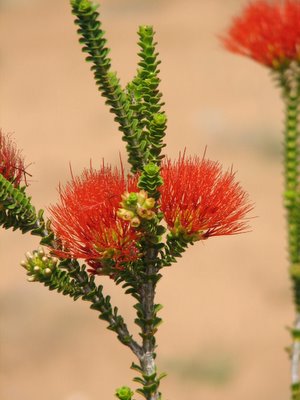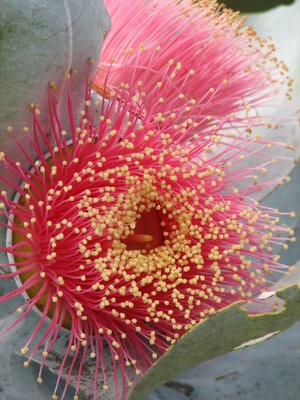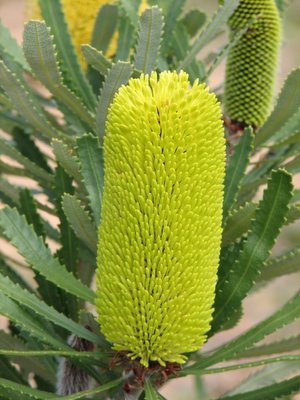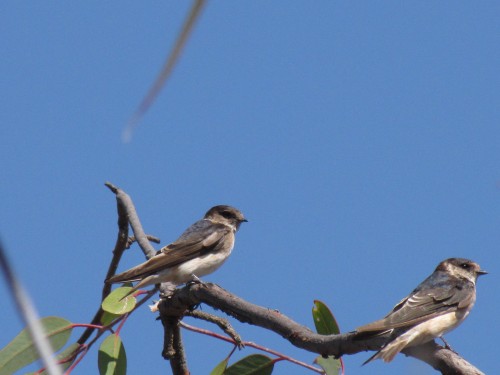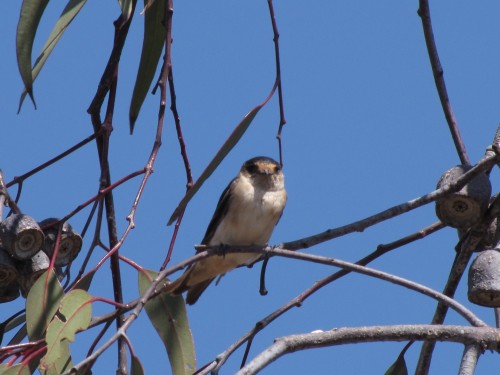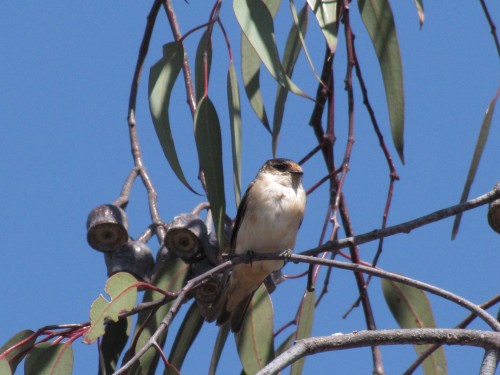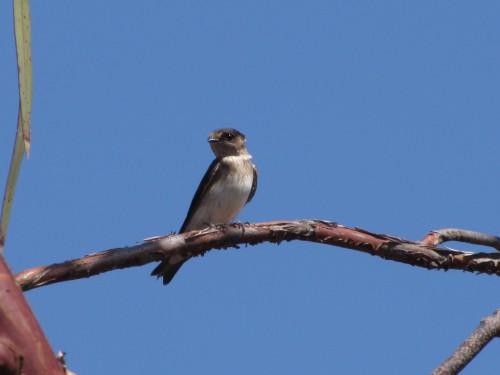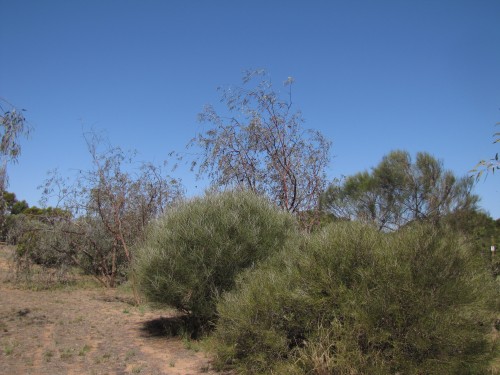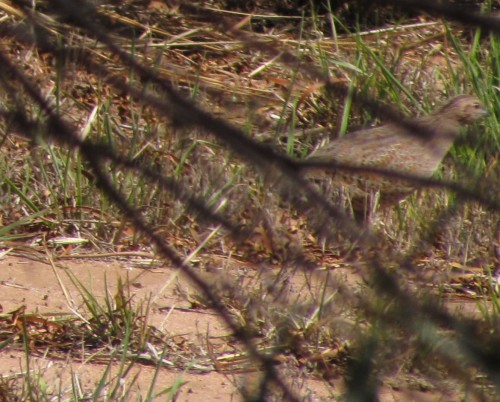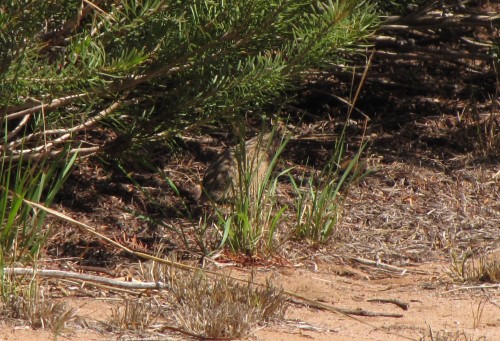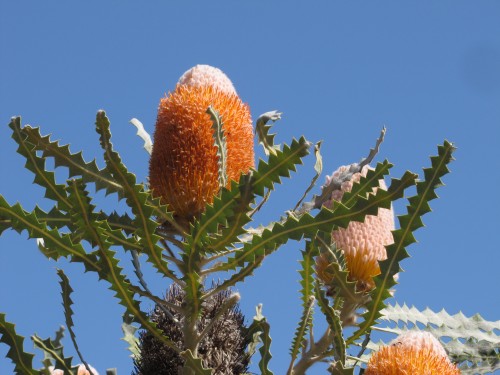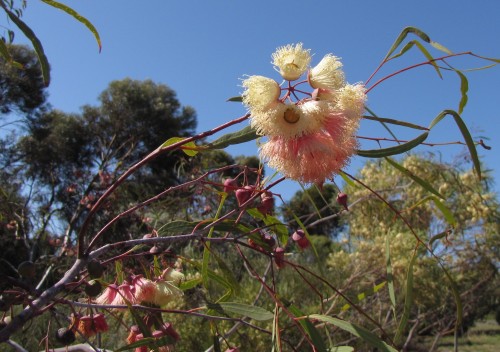Pangarinda Arboretum, Wellington, South Australia
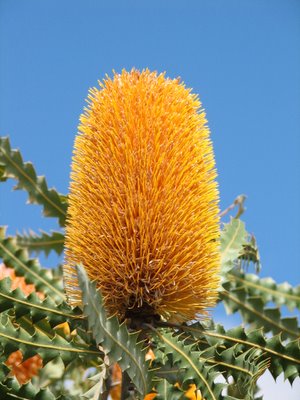
This morning we travelled down river through Tailem Bend to the small town of Wellington, South Australia. This town is near the end of the River Murray where it flows into Lake Alexandrina. From this lake it flows into the Coorong and out to the Southern Ocean.
Just east of the river at Wellington is the Pangarinda Arboretum. This consists of a plantation of Australian native plants established over a decade ago by local members of the Australian Plant Society (APS). The plantation has been planted in sections to represent different plant regimes from different parts of Australia.
Today’s gathering of members of APS was for a special Christmas lunch for members of the three local branches of APS. Members came from the Murray Bridge, Parrakie and Karoonda groups. Also present were members of the family of Ross Foreman who celebrates his 80th birthday tomorrow. Ross and his late wife Pat have been long time members of APS and they have freely given hundreds of volunteer hours of work to the arboretum. After cutting the birthday cake we all moved to another section of the plantation for Ross to open the Foreman Gazebo. This looks over the arboretum to the east and the river to the west.
After the ceremony we all wandered around the plantings looking at the many flowering plants. Some had finished their spring flowering but others, like the banksias, were resplendant in a variety of shapes and colours.
The bird watching was quite good too, with 22 species recorded, despite all the people wandering around. I managed to get some very good flower shots and one good photograph of a thornbill. The following is a list of the birds seen:
White Faced Heron
Pacific Black Duck
Nankeen Kestral
Swamp Harrier
Black Kite
White Ibis
Rock Dove
Peaceful Dove
Crested Pigeon
Galah
Elegant Parrot
Singing Honeyeater
New Holland Honeyeater
Magie Lark
Australian Magpie
Yellow Rumped Thornbill
Common Starling
House Sparrow
Common Blackbird
European Goldfinch
Willie Wagtail
One of the members who regularly does volunteer work there reported to me that Zebra Finches had been breeding in the plantation recently.
Tree Martins all a twitter
A few weeks ago we had a day out with friends of ours. It was my wife’s birthday and after a wonderful lunch in one of the local hotels, we drove from Murray Bridge down south to Wellington. We had a twenty-minute wait to cross the River Murray on the local ferry; for some reason, we struck a very busy time. Driving off the ferry and heading east towards Tailem Bend for about a kilometre we turned off to the left. Several hundred metres on we came to the Pangarinda Botanic Gardens, one of our favourite places to visit near where we live.
These gardens, formerly known as an arboretum, are extensive plantings over 12 hectares of Australian native plants. This is always of particular interest to my wife – you can visit her site Mallee Native Plant Nursery here. While our visit coincided with the latter part of a very hot and dry summer, there was still a good variety of plants flowering. Late winter and early spring are certainly the best times to visit.
I have also found that wherever one finds extensive stands of Australian plants, there is also a good chance of a pleasing variety of birds. We found a newly installed picnic table to enjoy an afternoon cuppa and some birthday cake. While we sat there enjoying the bright, sunny day and gentle breeze, I was able to make a good list of birds seen and heard.
One of the bird species I quickly saw was the Tree Martin. A loose flock of about 50 or 60 martins were swooping and soaring overhead and over one particular group of eucalyptus trees about 50 metres away. After enjoying our cuppa my friend Keith and I wandered over to get a closer look. We could see that many of the martins were perching on several trees. Now I immediately thought that this was a good opportunity to get some close-up photos of this species. Usually, I only get to see this species on the wing, usually high overhead, not a good way of getting photos of this small species. They also fly very quickly.
I was able to approach to within about 10 metres of the tree and I managed to take a series of lovely photos as shown in today’s post (see above and below). While I have seen individuals and even a small group landing near to each other in a tree or on electricity wires, this is the first time I have seen such large numbers all settling near to one another. I am not sure why they were doing this. Then after a minute or so they would all take off again for a minute or two, before settling in the trees again. Perhaps they were just letting their food settle; there were plenty of insects on the wing that day so it was a feast for them, I guess.
Further reading:
Calling up a Brown Quail
Yesterday was my wife’s birthday.
To celebrate we went out to lunch with friends, and then drove south to Wellington on the River Murray. After crossing the river on the ferry we drove the short distance to the Pangarinda Botanic Gardens (formerly known as the Pangarinda Arboretum). My wife enjoys exploring places where native Australian plants are the feature. You can check out her site about Australian plants here.
We found a shady spot in the middle of the gardens, complete with a table and seats. The garden all around us was alive with birds, especially dozens of New Holland Honeyeaters. We also saw White-browed Babblers, Red Wattlebirds and Little Wattlebirds, along with dozens of Tree Martins soaring on the breeze hawking for insects (photos to come in a few days’ time).
As we were having a cuppa and some delicious birthday cake, we heard an interesting call nearby. It wasn’t long before we spotted a quail-like bird skulking through the garden about 50 metres away. I checked my bird app on my phone and immediately recognised the call of the Brown Quail. I knew that I didn’t have a photo of this species, so I set off in pursuit. I actually managed only two photos which I have cropped and shown here today. They are not brilliant photos, but they are the best I have.
This is the first time I have seen this species, even though they are relatively widespread in the region where I live. They can be quite shy birds, hiding in grasses and bushy areas. I guess that they have found these gardens to their liking and are getting used to people being around quite often. I was amused when my friend Keith started imitating the call – and both birds answered him from nearby. They also answered the call from the app on my phone. Neither Keith’s call, nor that from my phone made them come closer to investigate. At one point one of them did fly low over the table where we were sitting, but it went straight into a bushy area and out of sight.
As far as I can tell from my memory and records, this sighting is a “lifer“, that is, it is the first time in my life I have seen this species.
Further reading (click on the title):
- Mallee Native Plants – my wife’s site about Australian plants
- Pangarinda Arboretum – some flower photos are featured in this post
- Birds and plants of Pangarinda Arboretum – more photos of the beautiful plants in these gardens
- Spotted Nightjar at Pangarinda
- Red-capped Robin at Pangarinda – featuring possibly my favourite photos of any bird
Below I have included several flower photos taken yesterday.
Portrait of a Willie Wagtail
Earlier this year we visited the Pangarinda Arboretum at Wellington here in South Australia. While photographing the many wildflowers on show I took this portrait of a Willie Wagtail.
The arboretum is about a half hour drive from home and just over a hour’s drive from Adelaide. From a small hill in the reserve one can get a good view of the River Murray a few hundred metres to the west. The arboretum is a collection of hundreds of Australian native plants. I really enjoy visiting this reserve as there is always a good range of wildflowers to photograph. I’ve included several below. This arboretum has been established and is maintained by an enthusiastic group of local plant lovers. It is always open to the public and entry is free.
The birding in this native plant garden can be variable. Sometimes the place is full of a wide variety of birds; at other times I struggle to get more than 20 species on my list. It depends very largely on what is flowering although some species are resident breeding birds, like some of the honeyeaters.
